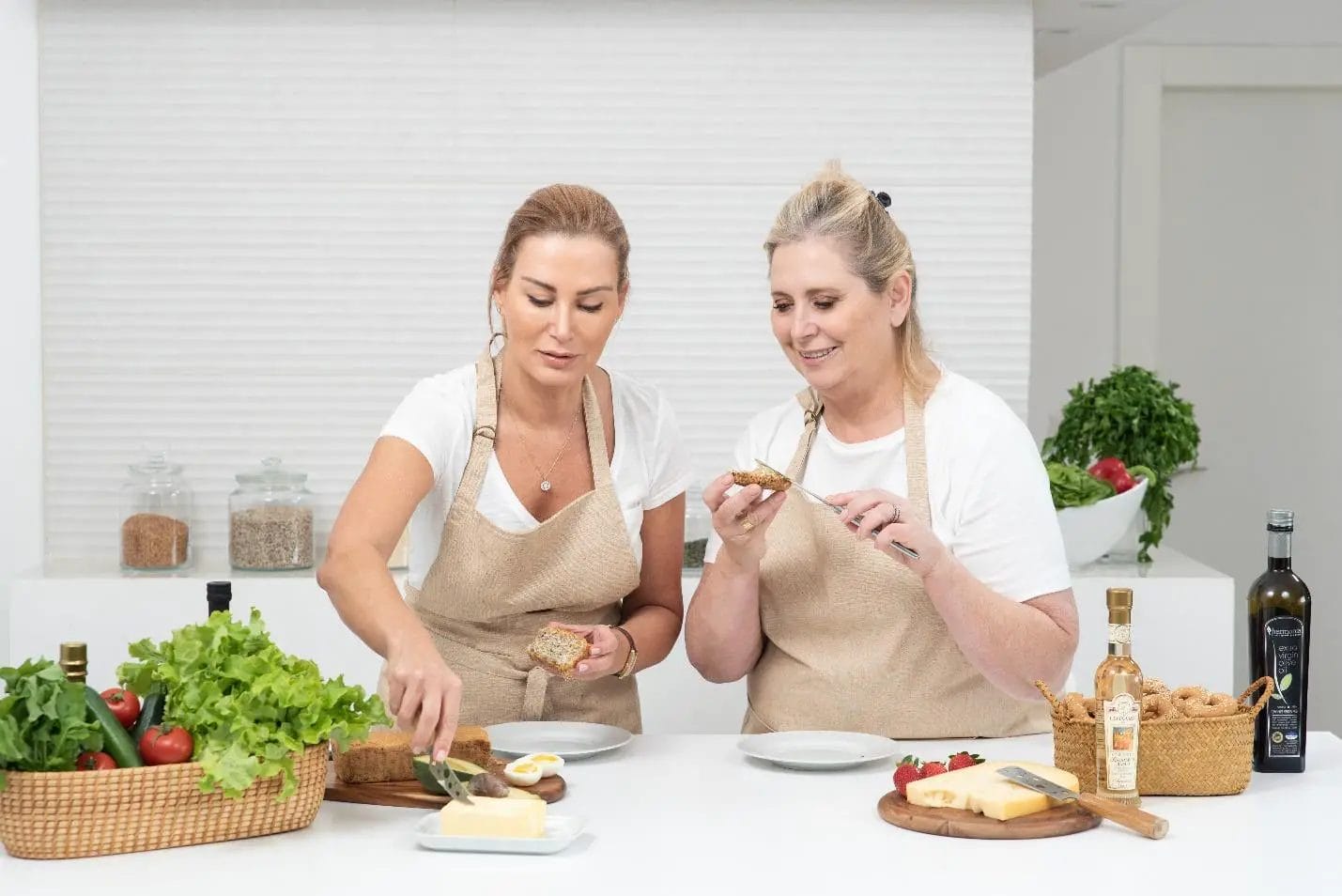Vegan or plant-based butter is an alternative to regular butter and is made from dairy-free sources. A simple recipe to make plant-based butter involves mixing buttermilk—(plant-based milk curdled using acids, like vinegar or lemon juice)—with plant-based oils. This gives the butter its texture and stability.
There are a lot of options among plant-based oils and you can take your pick depending upon your dietary requirement or personal preference. Canola oil, palm oil, avocado oil, refined coconut oil, sunflower oil, and extra-virgin olive oil are all plant-based oils that you can choose from.
How to Keep Your Plant-based Butter Super Creamy
If your plant-based butter doesn’t have a buttery flavor and a soft and creamy texture that is easy to spread on toasts, you need more practice making it. For your ease, we have made a list of tips that will help ensure that your vegan butter tastes more like butter and less like a substitute.
1. Use Lecithin
Lecithin, or plant-based fat molecules, are an important ingredient that give a creamy flavor to butter. Easily available in liquid and granulated forms, lecithin acts as an emulsifier and hinders the separation of oils and water. It is the main contributor to achieving a soft and spreadable consistency.
2. Use Non-Dairy Milk
Non-dairy milk is your best friend when you’re making plant-based butter. Use the unsweetened versions of either almond milk or cashew milk. You can also go nut-free and select soy, oat, or hemp milk.
Another important tip here is that the higher the protein content in the milk, the creamier the texture of the butter. As nut milks are on the lower side of the spectrum when it comes to protein content, you can compensate for consistency by adding a tiny bit of nutritional yeast.
3. Use Refined Coconut Oil
When it comes to vegan alternatives for most ingredients, coconut oils have always been the go-to option for cooking. Vegan butter is no different. So for a stable texture and rich flavor, use refined coconut oil. Using a refined version will prevent the butter from tasting like coconut and give a neutral taste to the final product.
Required Ingredients and their Substitutions
- Canola Oil Vs Refined Coconut Oil – Coconut oil has a melting point of 76°F, and it solidifies the butter at room temperature. Refined coconut oil offers a clean and neutral taste while canola oil enhances the “butter” flavor. It also makes the butter soft and easy to spread.
- Soy Milk – This provides the necessary protein required to set the butter. It also gives a kick of rich creamy flavor to the butter.
- Lemon Juice or Apple Cider Vinegar – You need an acid to curdle the milk. Curdled milk enhances the richness of the flavor and promotes the preferred buttery consistency. Freshly squeezed or bottled, both will act the same way.
- Salt – Salt can be used to add flavor to the butter. For an unsalted variation, skip it in the process.
- Soy Lecithin or Sunflower Lecithin – Butter, when left out at room temperature for long, tends to separate and lose its consistency. Soy Lecithin, or if you require a soy-free option, sunflower lecithin, helps bind the oil and milk, so they don’t separate at warmer temperatures.
Helpful Tools To Have
- A regular or immersion blender
- A glass container
- Butter mold
Quantities of Ingredients
- Plain soy milk (or soy-free version) | 1/2 cup
- Lemon juice | 1/4 teaspoon
- Refined coconut oil | 3/4 cup
- Canola or light olive oil | 3/4 cup
- Salt (optional) | 1 teaspoon
- Soy lecithin (optional) | 2 teaspoons
How to Prepare Plant-based Butter

- Start by measuring and mixing half a cup of plain soy milk and one-quarter teaspoon of lemon juice. Let the mixture sit for 5 minutes or until it curdles.
- refined coconut oil until it starts melting.
- Pour the melted oil into a blender.
- In the same container, add salt, canola oil, and soy lecithin.
- Pour the soy milk and lemon mixture from the first step into the blender and start blending until well mixed.
- When it starts getting slightly thick, pour it into a glass container and cover it with a lid.
- Set it until firm by placing the glass in a freezer for 30 to 40 minutes.
- When the butter has set to a solid consistency, move it to the refrigerator.
- It will be good to use for around a week.
How to Use Plant-based Butter
You can use this plant-based butter the same way as you would a dairy-based one. You can use it for baking and frying. Setting it into sticks or a tub will give you better control over how you want to use it.
For baking and frying, you can use the stick version. For spreading it over toast, bread, tortilla wraps, or just about everything, using the tub version would be a better idea.
You can use the butter to cook butter-based dishes, bake cookies, make buttercream frosting, or even vegan buffalo sauces and brown butter!
How to Store Plant-based Butter
Nothing beats storing plant-based butter in an airtight container or a tub. It makes it easier to keep it fresh for long, use it for everyday cooking, and spread it whenever you need to. In a fridge, this fresh homemade butter can last for 12 to 14 days. When frozen, it will be good to use for up to 3 months.
When using the butter for baking, storing it in a silicone mold makes for a comfortable and smooth experience. You can easily make cookies, pie crusts, and vegan buttercream with plant-based butter.
Freezing the Plant-based Butter
The recipe above will give you about 3 cups of butter. If you have a small family, you might not require so much of it, considering it does not stay fresh for long. For that, you can either cut the quantities in half or freeze half of the prepared butter and keep the rest in the fridge. When freezing, be sure to use an airtight container.
Conclusion
We know you will never be satisfied with any vegan margarine or butter alternative once you make this plant-based butter using our recipe. The rich, creamy, buttery taste and the smooth texture can be achieved at home in a matter of minutes, and that too at a fraction of cost when compared to the store-bought brands.
Palm-oil-containing margarine is bad for your health and does not taste half as good as this. Have a go, try this recipe, and let us know how your plant-based butter turned out and how you plan on using it!






